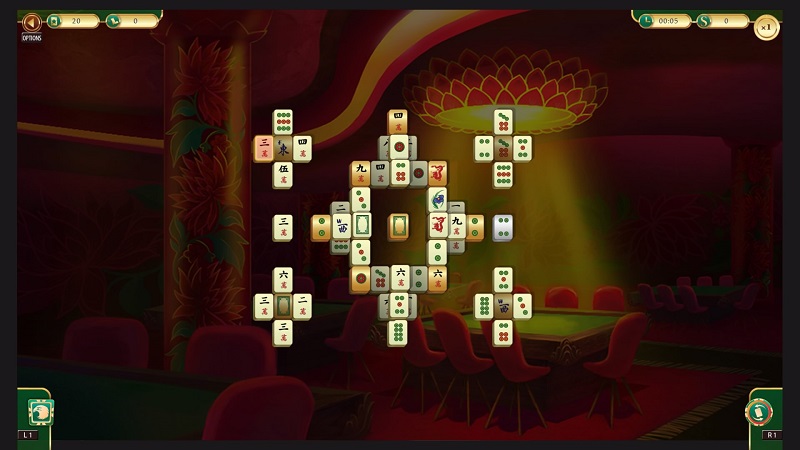Mahjong: World Contest is a traditional Chinese puzzle game available for download from the PlayStation Store for the PS4 having previously separately released on Vita. I have played Mahjong games since the retro days of the Amiga and 3DO, so I was very happy to see 8 Floor Games porting their Mahjong games that were previously released on Vita over to the PS4. Can Mahjong: World Contest match up to or better Mahjong experiences that has came before it on the PS4?
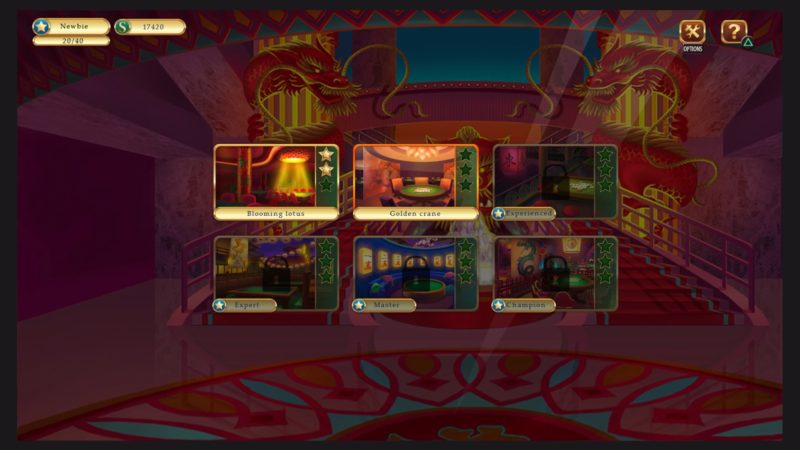
There are six different categories of levels that are referred to as contests with each contest spanning 20 levels totalling to an amazing 120 levels! Each of the six contests has a specific name including: Blooming Lotus; Golden Crane; Bamboo Grove; Red Phoenix; Sakura Branch; and Azure Dragon with each being tied to a rank including candidate, newbie, experienced, expert, master and champion. You start out with only one contest that you can enter with only the first level unlocked and you work your way through each and every level attempting to earn enough stars to unlock the second contest as you unlock the next level by achieving between one and three stars in each level. The amount of stars that are required to unlock the second contest and each of the six contests thereafter are clearly highlighted on the contest and level selection menus; which is a positive and appropriate design choice as it allows the player to know exactly where they stand in regards to how close they are to unlocking the next set of levels contained within the next contest.

Mahjong: World Contest retains the same core premise as previous Mahjong games as you attempt to pair matching tiles together. The real puzzle element of the gameplay is provided by the traditional rule of only being able to pair matching tiles from the outer edge of any group of tiles. There are tile families such as seasons and flowers that can appear differently from one another in their appearance by their colour but can still be paired together; which is something that you really have to keep in mind when frantically trying to search for your next matching pair of tiles. There are two additional types of tiles that consist of silver tiles and gold tiles. When silver tiles are removed from the board; they will automatically restore your ability to shuffle tiles, while the amount of golden tiles varies from level to level, although it is a requirement that every golden tile must be removed from the board in order for you to complete each level.
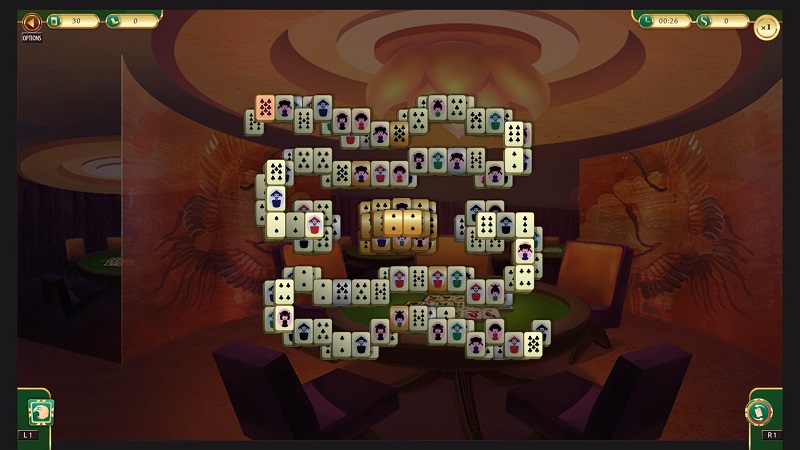
There are three sets of tiles with a wide assortment of tile categories including seasons, flowers and hearts. As each of the three tile sets are completely unique in design, they really add another layer to the gameplay, as it means you can replay levels with different designs across all of the tiles. This is an excellent design choice as it provides further variation of tile positioning beyond the re-shuffling of tiles at the start of each level you have already played, rather than just being about memorising the positioning of the matching tiles by parrot fashion and you can change the tile set at any given time on any level from the pause menu which freshens up the gameplay even further. The traditional tile set includes pictures you would normally see when playing a game of Mahjong, while the hearts tile set mostly consists of hearts, clubs and diamonds from poker cards and related patterns, alongside the numbers tile set consists of numbers and relevant patterns.

There are various bonuses within the gameplay mechanics such as tile shuffles when you have used all of the possible pairings for matching tiles together which needs to be recharged after use by pairing together a few tiles; alongside a skill for shading blocked tiles, while keeping available tiles brightly coloured which is an ability that can be used throughout each level from start to finish.
There is a multiplier that becomes active once you have chained together a few quick moves to remove matching pairs of tiles from the board. The multiplier will then increase the points you earn from removing matching pairs of tiles from the board such as a move that would have previously earned you 10 points will instead earn you 20 points during the x2 multiplier.
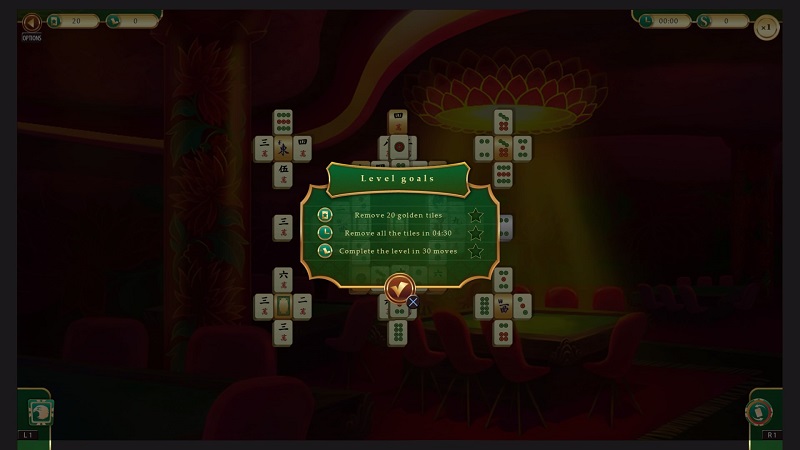
It would have been great to have seen more objectives beyond the usual 3 such as producing randomly generated special tasks for levels that you have already earned 3 stars on; providing fresh challenges for you to complete a level within a certain number of moves, a higher level of points, a particular multiplier or a time limit that is considerably lower and harder than the 3 standard objectives which would effectively act as a reward by increasing the amount of replayability for having completed a level within a particular time, within a certain number of moves, having achieved a particular multiplier or having reached an unprecedented points tally.
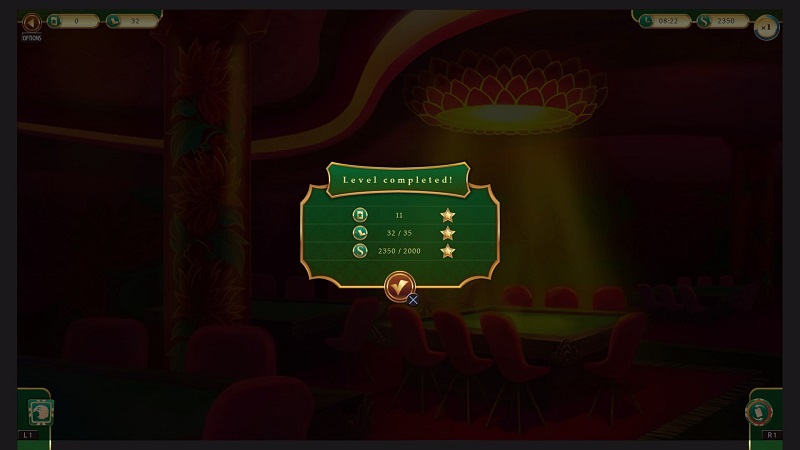
Scrolls appear on screen when you have achieved the requirements of a trophy or a major objective within the game or even when you have ran out of matching tiles to inform you that the shuffle bonus is available and that it will be applied automatically for you to continue your progression through the level. This is a very nice touch of detail which brings authenticity as scrolls are something you would expect from ancient Chinese tradition.
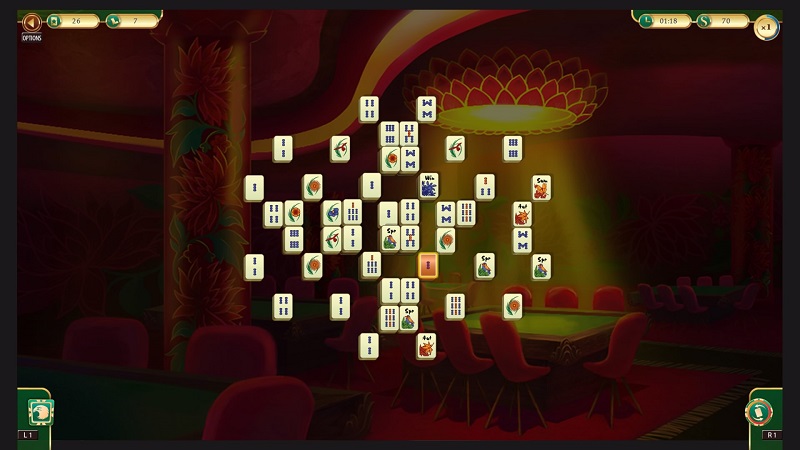
The controls are entirely different on the DualShock 4 controller in comparison to that of the Vita’s purely touch screen control scheme. The control scheme consists of changing the direction of the left or right analogue sticks or alternatively pressing up, down, left or right on the d-pad in order to highlight a different tile for selection; pressing X to select a tile; pressing R1 to shuffle the tiles; pressing L1 to shade blocked tiles; pressing the share button takes you to the share feature menu; and pressing the options button to display the pause menu. There is no touch pad support which is very surprising as the Vita has a total focus on touch screen gameplay; therefore it would have been better to have a cursor that would have been free flowing in movement throughout the board to make it a bit easier to navigate to the particular tiles that you wanted to pair together via the left or right analogue sticks, d-pad or swiping across the touch pad. There is no light bar implementation which in between attempting to pair tiles together could have produced a neutral colour of yellow which represents Earth and heroism in China, a light tone of green when successfully matching a pair of tiles or red when a pair of tiles do not match, while there is also no vibration, although that can be forgiven as the pressure of vibration would not be in conjunction with the relaxation of Mahjong.
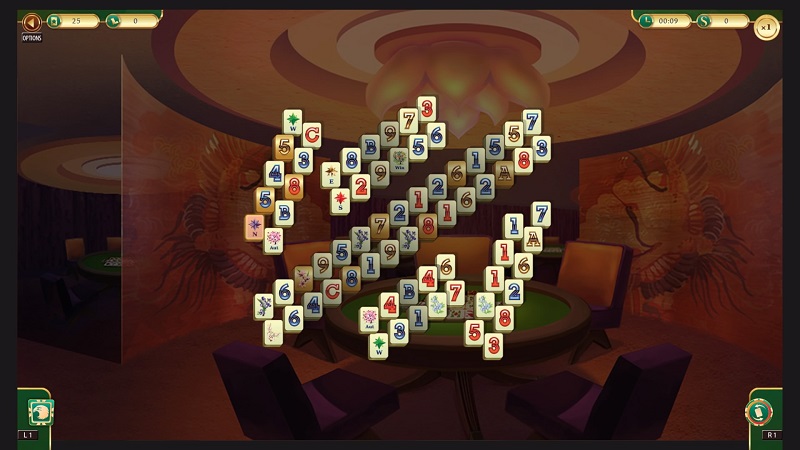
Graphically, Mahjong: World Contest provides everything that you would expect to see from a Mahjong game with colourful and detailed tile sets and backgrounds that really authenticate the experience of Mahjong.
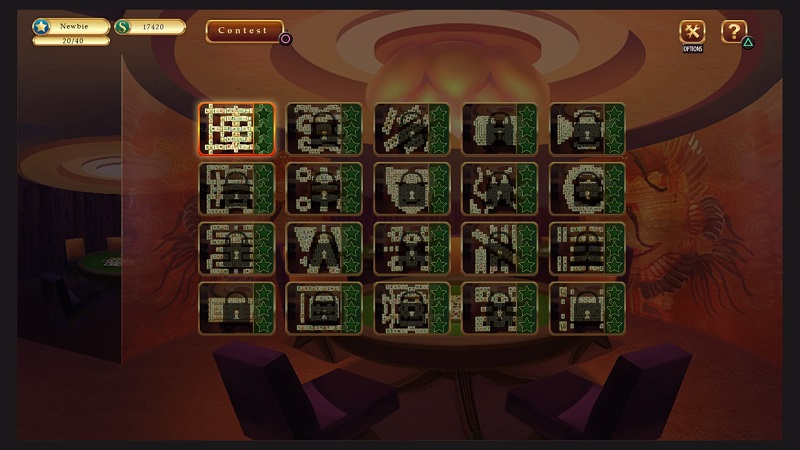
The presentation of the game is solid with a great user interface across various menus such as the contest menu, level selection menu, options menu and gameplay menus with support for navigation via the left and right analogue sticks, directional pad and face buttons, although it does not include support for navigation via the touch pad. The lack of touch pad support for navigating menus is odd given that the Vita version has a touch screen focused user interface. The background of the menus looks very colourful and vibrant as they contain a still image in the background that represents the category of levels you have chosen.
The audio consists of the style of music that you would typically associate with a Mahjong game as it has a laid back and relaxing quality to it which ties in with the graphics to provide an authentic Mahjong experience. Sound effects include choosing your first tile and the second tile to pair it with, alongside shuffling tiles. There is no DualShock 4 speaker implementation which could have produced specific sound effects such as when a pair of tiles is successfully paired together, shuffling tiles or tranquil music.
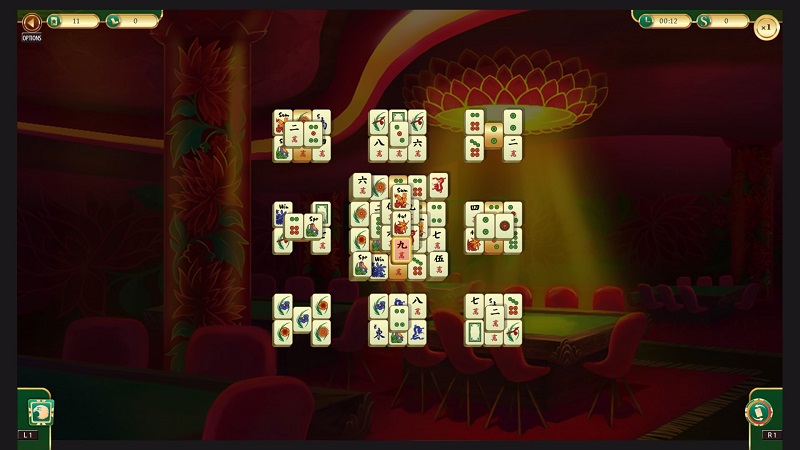
The trophy list includes 13 trophies with 9 bronze trophies, 3 silver trophies and 1 gold trophy. You may not necessarily find the trophies easy due to how difficult you may find some of the requirements for each level such as completing a level within a certain period of time or within a certain amount of moves for instance, but the majority of the trophies are naturally earned through playing the game and will not require you to deviate from the objectives you have been set for each level. The first trophy you will earn will be the Champion Cup bronze trophy for finishing the first level with three stars as the first level has much easier requirements, so this should be a pretty quick trophy lasting only a matter of two minutes or less, while the other easy trophies include the Junior’s Prize bronze trophy for collecting 30 stars which should be easily achieved by the end of the first contest; the Casino Chip bronze trophy for using the bonus 50 times by shuffling the tiles a total of 50 times; and the Mahjong Tile silver trophy for removing 1,000 pairs of tiles which should be completed naturally within 20 to 30 levels. The trophies are mostly aimed at completing all of the levels within each of the six contests and while they provide 5 bronze trophies and 1 silver trophy; they are certainly going to take a fair amount of time to complete all 120 levels required for those six particular trophies. Harder trophies include the V.I.P. Chip bronze trophy for scoring 100,000 points, although that is an overall total of points and you can view your progress towards the figure from the contests menu and level selection menu, so you will earn the trophy naturally as you progress through the second contest; the Sprinter Cup silver trophy for achieving the x5 multiplier for consistently matching pairs of tiles very quickly; and the Expert Diploma gold trophy for completing 30 levels with the highest score in each. I would estimate depending upon skill and a good trophy guide to provide some helpful tips that it would take around 10 hours to 100% the trophy list.
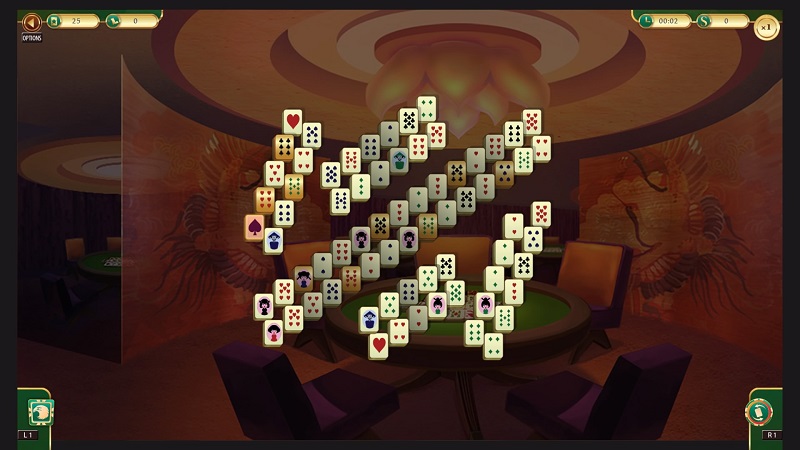
There are six difficulty levels including candidate, newbie, experienced, expert, master and champion which introduces gradually harder requirements for achieving stars such as lowering the number of moves you can make within a level; increasing the points total you need to score; lowering the period of time you have to complete a level; and increasing the amount of gold tiles that you have to remove before completing the level. The point being is that this is still essentially Mahjong and if you are pretty good at spotting the matching pairs of tiles, then none of these harder requirements will feel like restrictions, so while there are technically various difficulty levels; it will really depend upon your own skill level at playing Mahjong as to whether you feel any difference between them.
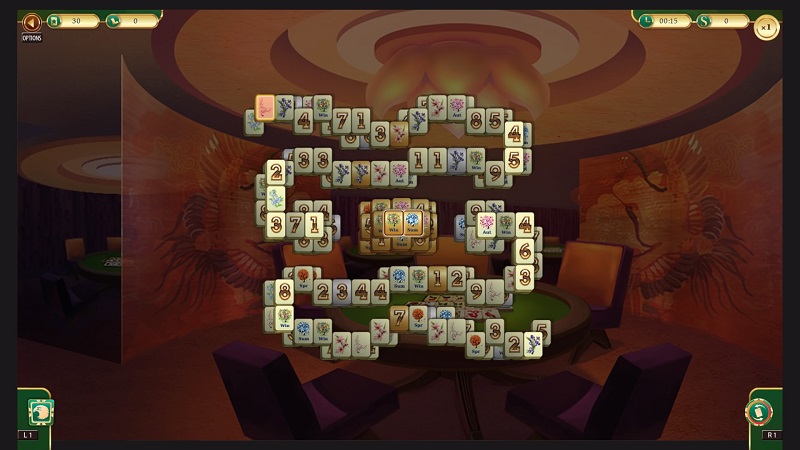
There are no local or online multiplayer modes which is a bit disappointing as it would have added another competitive edge to the gameplay such as a local and online battle system in which you and your opponent are attempting to complete the level first and the ability for one player to make it more difficult for their opponent by going on a run of 10 rapid consecutive tile matches; sending more tiles over to your opponents’ screen in the process. You could even perhaps bet some of your points tally earned from the single player or the previous round of multiplayer with customisation in the form of how many consecutive rounds you prefer to play, specific objectives and how many points you want to bet on the outcome. Online leaderboards could have had leaderboards for the best times for each level; the largest amount of points to be earned for each level; the highest multiplier to be achieved for each level; the lowest number of moves for each level to be completed within; and every leaderboard repeated for each of the six contests.
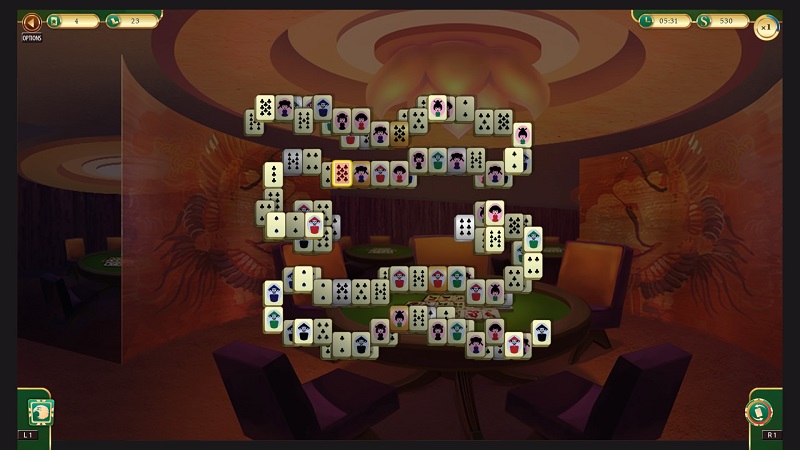
Mahjong: World Contest is no exception in following the tradition usually set by Mahjong games by having a great amount of replayability spanning 120 levels spread across six contests complimented by three objectives to complete for every level providing collectable stars to represent your degree of success, alongside three unique tile sets that keep each level fresh every time you return to play it.
Analysis
– Title: Mahjong: World Contest
– Developer: 8 Floor Games
– Publisher: 8 Floor Games
– System: PS4
– Format: PSN Download
– Cross-Buy: No
– Cross-Play: No
– Players: 1
– Hard Drive Space Required: 149.2MB
